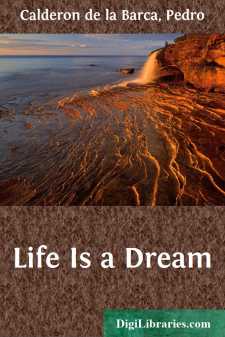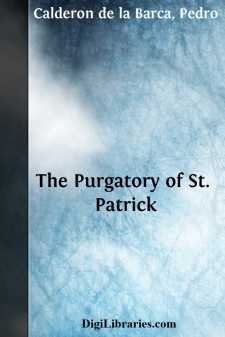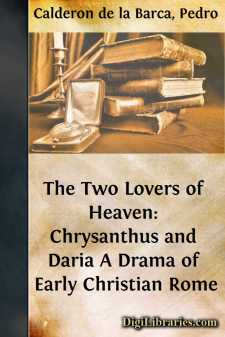Categories
- Antiques & Collectibles 13
- Architecture 36
- Art 48
- Bibles 22
- Biography & Autobiography 813
- Body, Mind & Spirit 142
- Business & Economics 28
- Children's Books 15
- Children's Fiction 12
- Computers 4
- Cooking 94
- Crafts & Hobbies 4
- Drama 346
- Education 46
- Family & Relationships 57
- Fiction 11828
- Games 19
- Gardening 17
- Health & Fitness 34
- History 1377
- House & Home 1
- Humor 147
- Juvenile Fiction 1873
- Juvenile Nonfiction 202
- Language Arts & Disciplines 88
- Law 16
- Literary Collections 686
- Literary Criticism 179
- Mathematics 13
- Medical 41
- Music 40
- Nature 179
- Non-Classifiable 1768
- Performing Arts 7
- Periodicals 1453
- Philosophy 64
- Photography 2
- Poetry 896
- Political Science 203
- Psychology 42
- Reference 154
- Religion 513
- Science 126
- Self-Help 84
- Social Science 81
- Sports & Recreation 34
- Study Aids 3
- Technology & Engineering 59
- Transportation 23
- Travel 463
- True Crime 29
Life Is a Dream
Description:
Excerpt
INTRODUCTION.
Two of the dramas contained in this volume are the most celebrated of all Calderon's writings. The first, "La Vida es Sueno", has been translated into many languages and performed with success on almost every stage in Europe but that of England. So late as the winter of 1866-7, in a Russian version, it drew crowded houses to the great theatre of Moscow; while a few years earlier, as if to give a signal proof of the reality of its title, and that Life was indeed a Dream, the Queen of Sweden expired in the theatre of Stockholm during the performance of "La Vida es Sueno". In England the play has been much studied for its literary value and the exceeding beauty and lyrical sweetness of some passages; but with the exception of a version by John Oxenford published in "The Monthly Magazine" for 1842, which being in blank verse does not represent the form of the original, no complete translation into English has been attempted. Some scenes translated with considerable elegance in the metre of the original were published by Archbishop Trench in 1856; but these comprised only a portion of the graver division of the drama. The present version of the entire play has been made with the advantages which the author's long experience in the study and interpretation of Calderon has enabled him to apply to this master-piece of the great Spanish poet. All the forms of verse have been preserved; while the closeness of the translation may be inferred from the fact, that not only the whole play but every speech and fragment of a speech are represented in English in the exact number of lines of the original, without the sacrifice, it is to be hoped, of one important idea.
A note by Hartzenbusch in the last edition of the drama published at Madrid (1872), tells that "La Vida es Sueno", is founded on a story which turns out to be substantially the same as that with which English students are familiar as the foundation of the famous Induction to the "Taming of the Shrew". Calderon found it however in a different work from that in which Shakespeare met with it, or rather his predecessor, the anonymous author of "The Taming of a Shrew", whose work supplied to Shakespeare the materials of his own comedy.
On this subject Malone thus writes. "The circumstance on which the Induction to the anonymous play, as well as to the present Comedy [Shakespeare's "Taming of the Shrew"], is founded, is related (as Langbaine has observed) by Heuterus, "Rerum Burgund." lib. iv. The earliest English original of this story in prose that I have met with is the following, which is found in Goulart's "Admirable and Memorable Histories", translated by E. Grimstone, quarto, 1607; but this tale (which Goulart translated from Heuterus) had undoubtedly appeared in English, in some other shape, before 1594:
"Philip called the good Duke of Burgundy, in the memory of our ancestors, being at Bruxelles with his Court, and walking one night after supper through the streets, accompanied by some of his favourites, he found lying upon the stones a certaine artisan that was very dronke, and that slept soundly....





